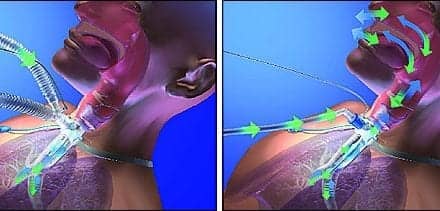A new study published in Anesthesia & Analgesia is the first to demonstrate that absolute oxygen saturation of arterial blood (SpO2) can be accurately measured across multiple patients using contactless technology, according to a press announcement by Royal Philips.
The study used Philips proprietary camera-based monitoring technology (photoplethysmography, or PPG) to measure the light reflected off the foreheads of 41 healthy adults to calculate SpO2. Through the results of this study, Philips said it is the first to demonstrate that contactless SpO2 can be calibrated across patients, just like conventional contact probes, allowing accurate measurements without individual adjustments.
Current methods for measuring SpO2, respiratory rate and other vital signs uses sensors on the skin or devices strapped to the body, but Philips said these contact sensors may cause damage and distress in patients with fragile skin such as newborn babies.
“Vital signs monitoring is crucial across all types of care settings, but for patient populations with specific conditions, managing their care in a less intrusive way is critical in order to avoid unnecessary distress,” said Carla Kriwet, CEO of Philips Patient Care & Monitoring Solutions. “Contactless monitoring solutions will offer clinicians with a way to accurately measure vital signs for patients in a non-obtrusive way, and provide them with the data needed to know when to intervene.”
In this recent study, calibration of contactless, camera-based pulse oximetry was performed on a population of 41 healthy adults and the results are promising for the successful use of contactless monitoring for absolute blood oxygen levels in care settings without individual adjustments, Philips reported.
With every heartbeat, the cardiovascular pressure wave causes tiny ‘micro-blushes’ (small changes in skin color) in the face. While these changes are not visible to the human eye, Philips’ contactless monitoring algorithms can calculate an accurate pulse rate by quantifying these changes.
The company said that, for specific patient populations, including premature infants in the NICU, a contactless alternative would provide potential advantages such as avoiding skin damage in fragile patients and the ability to take readings from better locations on the body.









